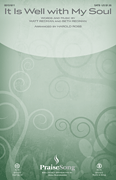Search Results for: “IT IS WELL”
Loading...
It Is Well With My Soul View 58 Products
Fanfare And Concertato On 'It Is Well With My Soul' View 11 Products
When Peace Like A River/It Is Well With My Soul View 7 Products
It Is Well With My Soul View 4 Products
It Is Well View 4 Products
It Is Well With My Soul (Philip Bliss) View 4 Products
When Peace Like A Prayer (It Is Well With My Soul) View 1 Product
It Is Well With My Soul (Arr: Lorie Line) View 1 Product
When Peace Like A River (It Is Well With My Soul) View 1 Product

